Please Support Our Efforts to Find a #Cure4Cindy!
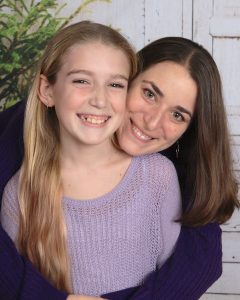 “When I hear a noise, I feel like I’m being stabbed in the ear.” – Cindy Redmond, 14
“When I hear a noise, I feel like I’m being stabbed in the ear.” – Cindy Redmond, 14
Cindy was at a friend’s house, chatting on her phone at the kitchen table. Her friend’s stepfather wanted her off the phone, so he blasted her with an air horn. Cindy felt a burst of pain in her ears.
Within days, she perceived sounds as amplified and painful. She could no longer attend school, where the schoolday noises were too loud for her. Cindy was unable to start ninth grade at Brandywine High School with her friends, and instead attends school online.
Cindy now suffers from hyperacusis, or noise-induced pain. All but the mildest noise feels like a knife stabbing her ear.
Cindy was on the TODAY Show!
No available treatment has helped Cindy, and there is no cure.

She copes as best she can with earplugs and earmuffs, which keep the pain from worsening but make it hard to hear and communicate. She misses seeing friends and eating out with her mom, Laurie.
Please help Cindy live a normal life, free from noise-induced pain. Share Cindy’s story and let’s find a #Cure4Cindy!
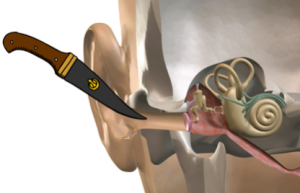 “Hyperacusis with pain feels like molten lava in the ear canal or ice picks stabbing the eardrum. The sensation lingers indefinitely after the sound is gone. Hyperacusis is poorly understood and not widely recognized. We are working toward understanding the chemical signaling pathways used by nerve fibers in the inner ear.” — M. Charles Liberman, Professor of Otology, Harvard Medical School
“Hyperacusis with pain feels like molten lava in the ear canal or ice picks stabbing the eardrum. The sensation lingers indefinitely after the sound is gone. Hyperacusis is poorly understood and not widely recognized. We are working toward understanding the chemical signaling pathways used by nerve fibers in the inner ear.” — M. Charles Liberman, Professor of Otology, Harvard Medical School
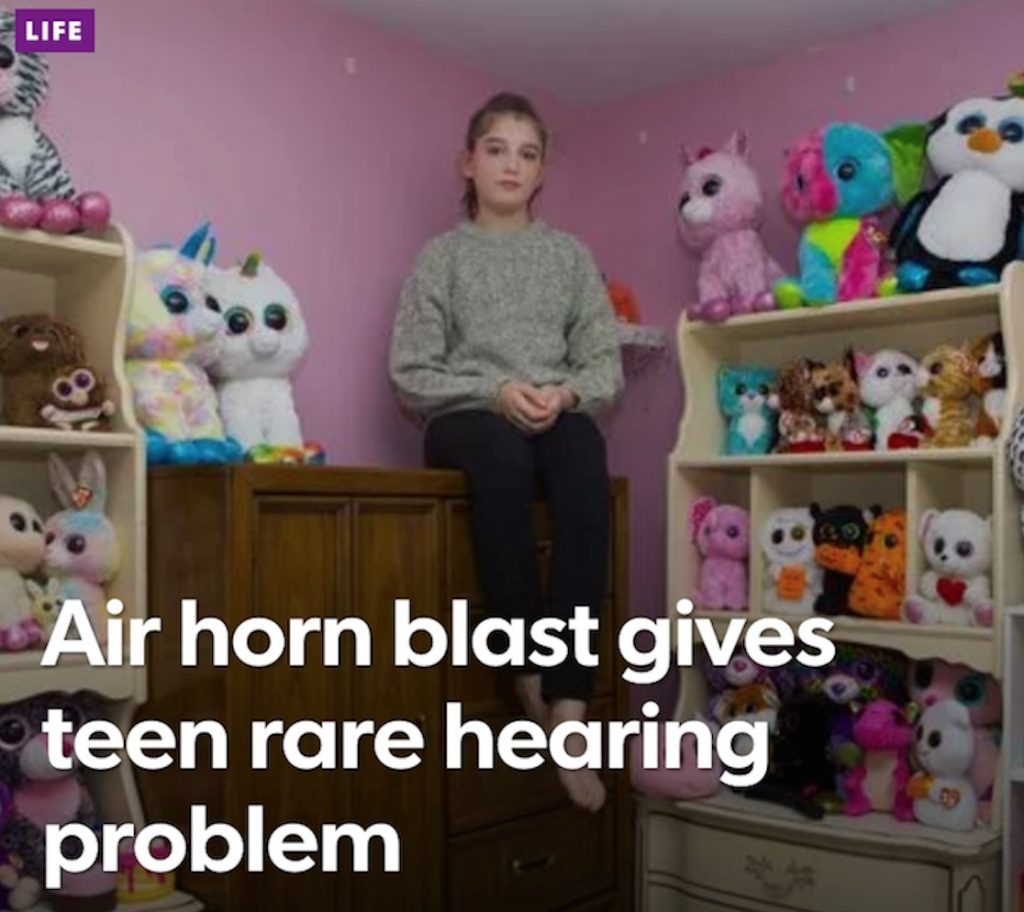
Read more about Cindy here and please share:
 Each $30,000 raised will fund one grant into research for noise-induced pain. As an alternative to donating online, you may send a check to:
Each $30,000 raised will fund one grant into research for noise-induced pain. As an alternative to donating online, you may send a check to:
Hyperacusis Research
P.O. Box 1295
Marlboro, MA 01752
Media contact: [email protected]
About Hyperacusis
Hyperacusis with pain, sometimes called noise-induced pain, is a new branch in the field of auditory pathology.
The primary cause is noise overexposure. An acoustic trauma, or noise injury, can result from one loud noise (airhorn, whistle, gunshot) or from constant exposure over time (concerts, headphones, power tools).
Other causes are head or neck injuries, ototoxic drugs and some diseases, including Lyme disease.
 Though noise overexposure usually causes hearing loss, in some cases it does the opposite, making noise seem too loud rather than too soft.
Though noise overexposure usually causes hearing loss, in some cases it does the opposite, making noise seem too loud rather than too soft.
Hyperacusis is often accompanied by tinnitus, or ringing in the ears, and a pressure feeling called aural fullness, along with burning ear pain.
The condition sometimes improves — but it readily recurs from a noise as ordinary as a passing siren, a barking dog or even a clanking dish.
Cindy says, “Everything sounds louder and is painful in my ears. We need a cure for hyperacusis so people like me can live a normal life.”
Share Cindy’s story with your network via e-mail and social media. The hashtag is #Cure4Cindy.
Follow Cindy on Facebook.com/Cure4Cindy and on Twitter at @Cure4Cindy.
Thank you for your support!
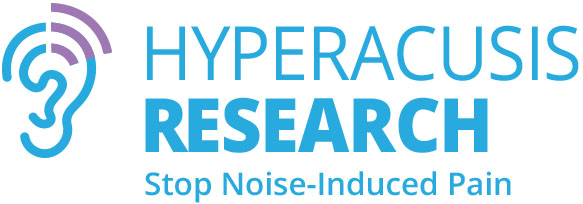
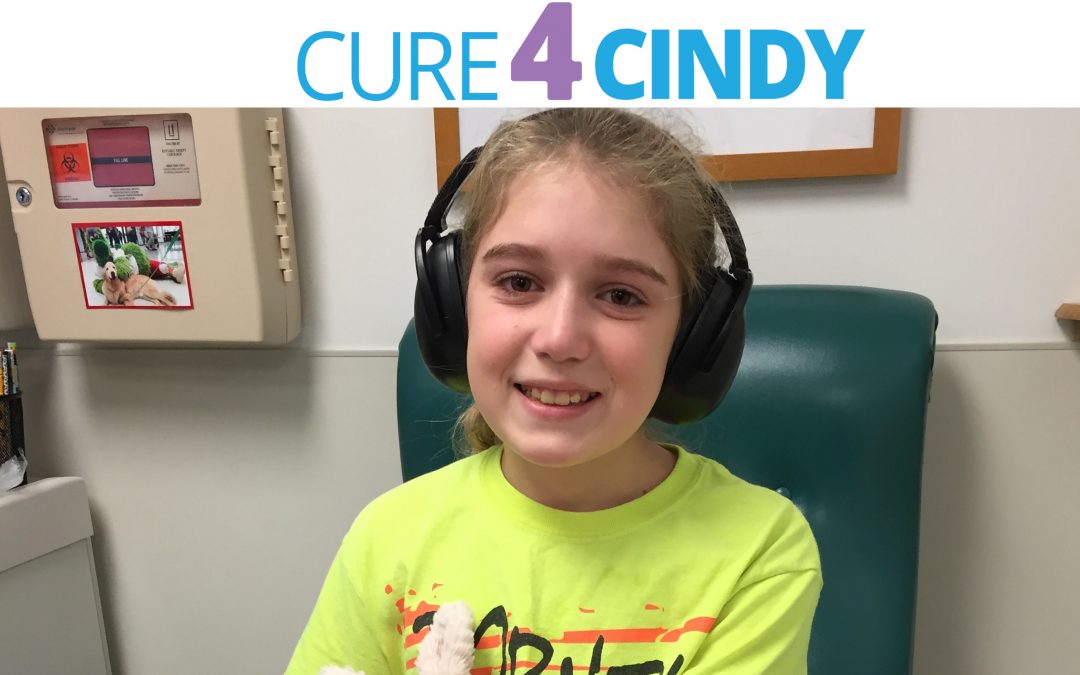
I feel sad for Cindy.
I also suffer from Hyperacusis with the same pain. I had a lot more years without this condition then she has.
I hope we can find a cure or a drug, which can deal with this awful situation.
I know we can, if we want.
Prayers to all the sufferers.
Was the friend’s stepfather sued? First off, he should be punished, and the punishment has nothing to do with whether or not it will give Cindy back her ears. Secondly, she will need money for lifestyle adjustments, special ear plugs and muffs, treatments, and other accommodations. The evil man should not be allowed to get away with this. Makes you wonder how he treats his stepdaughter. Why would he even CARE if his stepdaughter’s friend had a phone at the table? WTF
I read in a magazine that they did not press charges.
Contact The Children’s Institute in Pittsburgh, PA to find out if they can help. They work with children who have sympathetic pain. They helped my son. He had reflexive neurovascular dystrophy, which is when the brain keeps sending a pain signal even after the stimulus is no longer present. It’s a unique program to re-program the brain.
My son dealing with this also
I have hyperacusis. Sound therapy (wearable sound generators) and pink noise CDs at slowly increasing volume have helped me a lot. It hasn’t been a cure for me, but it does work in reducing / eliminating pain and increasing tolerance for me. It has been slowly, and have suffered repeated relapses due to loud noises, but it has worked for me. If you have not given this a lot of effort already, I would recommend it. I know it doesn’t work for everyone. E-mail me if you want to. This disease is terrible, I feel for you.
I have the same condition, can i email you?
Where are you located? Have you heard of the Tomatis Method? If used wisely, it can allow the protective mechanism of the mid-ear to start functioning again.
I am based in California and would be willing to see her for free. It would involve our own listening test, and extremely soft and gentle ear listening retraining.
I’ve also suffer from hyperacusis ever since a car accident in 2010. I’ve found what appears to be an effective treatment for the condition. It has been innovated by a ENT surgeon in Florida named Herbert Silverstein. I’m planning on getting the surgery in early 2018. Please read about it here:
Please watch the videos of patients at Dr. Silverstein’s website:
http://www.earsinus.com/inventions-procedures
There are two papers published about the effectiveness of this simple outpatient surgery:
A study of the results of two patients in the American Journal of Otolaryngology (https://www.ncbi.nlm.nih.gov/pubmed/25456168) and another study describing the results of six patients in the journal Otology and Neurotology (http://cdn2.hubspot.net/hubfs/2098840/Minimally_Invasive_Surgery_for_the_Treatment_of.97204%20(1).pdf?t=1501769210251).
I hope you get this message.
How has it been since your surgery? I’d love to know!
Please have Cindy and mother telephone me and I’ll describe how I completely and permanently reversed my hyperacusis.
Carol Brook
5l0 895 5571
I ain’t gonna help that ain’t my problem ??
I think we would all like to know how you completely and permanently reversed my hyperacusis… please share.
May i call you? or email you Please. My hyperacusis is severe since 5 yrs ago. Living with this is a misery.
[email protected] I have hyperacusis 21 years
I too suffer from hyperacusis and would like permission to call you to ask what you did. Thanks,
Laurie
My husband Geoff suffers tinnitus and hypercusius after using a brick saw with ear protection that obviously not enough. His life is now changed forever. We need research that I hope one day he can enjoy life again without earmuffs and earplugs, which are his only tools to get through every single day.
Cindy should make a claim against the friend”s stepfather. It should be covered by homeowner’s insurance which covers acts of negligence.
I would like to work on adresssing this through ADA laws , music and noise in public places , hold music for calls made to services needed by people with disabilities are often inaccessible because of the phone system .
My heart breaks for Cindy. As well as finding a cure for hyperacusis , I wanted to ask if there is a GoFundMe set up especially for Cindy for her medical expenses/special school expenses etc.? I know she won’t want anyone’s pity, but if enough people knew about this, I’m sure they would want to help her personally. What a brave young lady, sending very best wishes to you and your family! On a similar note, I always think how damaging those darn hand dryers are in public bathrooms – they are SO loud, that cannot be good for any of our ears (particularly developing children’s ears) and they should be banned. If anyone has any info on what to do to stop them being installed all over, it would be appreciated.
Why is this step father not under arrest/in prison. No different than any other felony assault resulting in bodily harm
My heart breaks for you. I’m so sorry you’re going through this. Keep searching for answers.
Ms. Cindy, please have your mother contact me: I can help with “hearing awareness.” This has helped me with hearing problems. I am NOT an MD, but, avid musician, amongst other endeavors! So, you know, I can’t lecture on the stapes, incus, cochlea, etc. Sometimes, it IS NOT how much you can “perceive,” BUT, what you do with what you CAN “sense!”
In any case, I enjoy guitar and keyboards — nothing else. 🙂
Let me know if my experience(s) can be of assistance…
Hello, Cindy. My name is Hanna. I’ve had Hyperacusis since I was 12 years old. I’m 19 now and having had Hyperacusis all this time, I know exactly what you’re going through as a young person with this really terrible condition. I have a few tips for you. You may have heard them a million times over, I know I have, but hopefully, they can help. First, I wanna say you’re most definitely not alone, as I thought I was in the beginning back in 2010. And I’m so very sorry this has happened to you. Second, subtitles really, really help with TV watching and movies if you’re ever bored. Books are great, too. The ear plug that works best for me and my boyfriend (who also has Hyperacusis) is called Sparkplug earplugs and you can buy a big box on Amazon.com for around 25 dollars. This big box lasts me a whole year of constant use. I wear earplugs and ear muffs day in and day out. It’s a necessity. I was able to finish school and graduate high school through Penn Foster Online High School and am even working online now and living on my own. I wish very much I could tell you some magical cure, but for now, I know it’s unbearable, but please hang tough. You’re incredibly brave. You’ll have good days and bad days. If you ever need to talk or have any questions my email is [email protected] and I’m always available.
Hey Cindy!! I am a hyperacusis survivor and I am officially cured now. I underwent a very rare form of hyperacusis treatment in Florham Park, New Jersey this year. I am living a hyperacusis-free life now and want to help as many others as I can. My friend saw the article in People Magazine and sent me the link. I want to get you in contact with the specialist who saved me and gave me my life back. I would be very happy to share my story and get you in touch with the help you need.
help the rest of us out. What did he do the Doctor
Cindy,
I have dealing with hyperacusis for a year and a half. I understand how isolating and really challenging it can be, I have found the Bose noise canceling ear plug headphones and the bigger headphones a godsend. They really cut out the back ground sound and take the edge off. My audiologist recommends to listen to quiet music when using though because it will further desensitize you to sound if you have them on without listening to something. I am curious what Laura Ransegnola who left you an e -mail did to get help. If you find her advise helpful , please let us all know. I recently connected with someone that had tinnitus and hyperacusis and after 2 and a half years got help with with taking neurontin and lipoflavonoid. After 6 months taking the neurontin her symptoms greatly improved. She stopped taking the medication as directed by her Dr. – that was 13 years ago. Wishing you healing and normal hearing
Hi Laura, have you submitted the information on what has helped you to hyperacusisresearch.org? Use on the contact form on this site so they can get your info in front of other researchers.
Hi Laura,
What was the treatment you tried?
Hi Laura, my name is sally I suffer from hiperacuses for 3 years now I live in Lincoln Park New Jersey can you email me please at [email protected]
Laura please email me I’m desperate for help.
Can you tell me more about this surgery?
Hello Laura!
I live near Florham Park NJ and I’ve been suffering from hyperacusis & tinnitus from a loud MRI I had six months ago. Can you please email me the specialists information?
Thank you!
Hi Laura. My name is sally I suffer from Hiperacuses for 4 years now, can you please help me I live 20 minutes away from Florham park, can you send me the address and phone number please so I can get the cute to please I’m bageng you please!!!!
Hi Laura. My name is sally I suffer from Hiperacuses for 4 years now, can you please help me I live 20 minutes away from Florham park, can you send me the address and phone number please so I can get the cute to please I’m begging you please!!!!
Hey Cindy–I’ve been a nurse for 25 years, and am very touched by your dealing with such a huge physical and life challenge so young. I don’t know what your family’s support system is, but from personal experience I’d like to suggest an online faith community that I personally know to be an excellent source of hope and strength in times of need: Elevation Church, based in Charlotte NC. Online you can listen at the level you want and when you want! And your mom could use some support too I’m sure….I am praying for you! And I will certainly support the research. Blessings to you in the coming year!
I have always felt ear pain when subjected to loud sounds. I avoided loud concerts, when I was younger. I don’t attend fireworks displays. I often turn down TV and radio volume.
I’d never heard of hyperacusis, until reading Cindy’s story.
Thank you for sharing Cindy’s story.
Cindy, from what I experienced and the people I talked to there is no magic bullet. I guess since your young, go and try the the retraining therapy. I got severe hyperacusis after a concert in 1993( I was 25 years old). I kept going to loud places and it got worse. I couldn’t talk without ears hurting and had thousands of setbacks from everyday exposure. Today I can talk loud a little bit but I wear half cut earplugs. The minor setbacks don’t seem as bad. I WILL SAY DON’T OVER PROTECT YOUR EARS THEY WILL GET WORSE> go in front of the mirror and start talking out loud. As for people such as friends and family, forgive them when they make bad comments. Friends of mine all moved on and left me behind. A lot of them didn’t believe me or didn’t care to be around me. A good attitude is important. Honestly, I am still pissed off at this. I want to go to the movies and see Shania Twain in concert but I’m not. I don’t want to be laying in bed for weeks with my ears and head hurting. Take care.
Hi Cindy and others reading this,
I also suffered from pretty bad hyperacusis after exposure to a loud noise, including ear pain. Although I was confronted with a lot of negative counseling, I learned after a while that hyperacusis can usually be significantly improved or even cured by using slow, purposeful desensitization of the auditory system. This is done by gradually exposing yourself to sound, such as everyday sounds, nature sounds and ‘pink noise’. Whilst it might be tempting to wear earplugs or earmuffs, this actually makes the symptoms worse in the long run as the auditory system becomes more and more hypersensitive in the absence of sound (although you should of course use hearing protection when sound levels are actually dangerous, as everyone should). After learning this and applying it in my every day life, my hyperacusis has very slowly begun to improve and continues to improve (although I am not quite there yet after about a year, it is quite a low process). I hope you, and others reading this, are able to find an audiologist who is qualified in this form of therapy, as there are many more aspects to it then I can describe in this short message. The road to recovery can be long and there can be set-backs, but it will be well worth it in the end to get your life back. Wishing you all the best!
There is a Go Fund Me to help cure Cindy, please share it!
https://www.gofundme.com/cure4cindy
Hi, Cindy! Thanks for acting as our spokesperson in recent years!! I can’t imagine having to live with this as a teenager! I have had hyperacusis with pain for over ten years now and am 41 with two adult children. They grew up having to be extremely quiet, not having friends over, I missed quite a few of their events, etc. so I know that this affects your entire family. I hope you appreciate your family for the effect this has on them as well. I pray for a cure, but know it will take time to see the effectiveness of any treatment. Anyway, I just wanted to reach out, because online is so often the easiest means of communicating. I’m really proud of you for being so open about your life with this condition. I enjoyed your cat watercolor on your vlog! And yes, the music was awesome! Shout-out to you for being awesome for all of us (not really shouting!)!
There is surgery! The brilliant Dr. Silverstein at the Sarasota Institute saved my life in July, 2018. Check out Hyperacusis Hope on facebook.
Hi, I have tinnitus and hyperacusis. I have not heard of any surgery as I have not had it long . Would you please send me the info. My email is [email protected] thank you.
I’m in recovery from hyperacusis surgery at the Silverstein Institute in Sarasota Florida. My surgery was eleven days ago and my sound tolerance has improved significantly. My ear is still healing and sounds different than before but it takes a few weeks to get the full benefits according to my doctors. They preformed a stapes bone reinforcement and round/oval window reinforcement as well. The cause was acoustic shock from an explosion that literally dislodged the stapes bone. Happened about nine years ago. Hyperacusis destroyed my career and my life.
Hyperacusis like tinnitus is not an ear problem. It is a noise perception problem in the brain.
Charles Andrews MD (tinnitus sufferer for 27 years) hyperacusis associated with same problem.
My cochlea was hypervibrating even under anaesthesia. Check our Hyperacusis Hope in Facebook. The brilliant Doctor Silverstein performed his Severe Hyperacusis surgery on me in July, 2018. He saved my life!
It can be an ear problem as well as a central nervous system problem. Actually, anything in the whole auditory chain can cause hyperacusis symptoms, even if they can differ in their sensation.
Cindy, I have had the Severe Hyperacusis Surgery by the Brilliant Dr. Silverstein at the Silvrrstein Institute in Sarasota, Florida. It worked for me! I can work again. This Doctor saved my life. Check out Hyperacusis Hope in Facebook. Wellness Prayers, Cindy.
I have had severe tinnitus and hyperacusis for just a few months now due to a injury at work. I don’t want to be negative, but there were days in the beginning I thought I didn’t want to live anymore. I plan to seek help and hope for improvement. I would be so thankful for any help as to what to do.I’ve been to ATA and plan to start treatment soon. Is this the best place. I read cindys story and I feel so bad for her,it breaks my heart! She is so young to have to suffer this torment. It’s easy to say to be positive but the reality is it’s hard to. I see here a lot of people who have improved. Please share how! Thank you so much,on behalf of cindys myself and others who suffer from this.
Hi Cindy
I write you from Argentina. In 2013 i suffered a head trauma playing soccer (I was the goalkeeper). Since that, I’m suffering from strong tinnitus in my right ear, strong hyperacusis and fullness in both ears (Tonic Tensor Tympani Syndrome).
I thought that I was the only person in the world with this desease.
My story is very similar than yours.
my e mail is: [email protected]
Don’t hesitate to write me.
Regards
Martín
Hi Cindy,
I have seen all your and your mom’s youtube video, I can understand every single challenge you and your mom are facing going through a normal day in life. I do have a brother who has Hyperacusis and all his life and our lives hs turned upside down, so I totally can relate. You are so brave and strong just like my brother and thank you for becoming the face to reach out to world and ask for help.
I have not seen any recent videos from you and your mom in Youtube or any updated comment here in regards to your status. Please kindly keep us posted of your situation, I truly from bottom of my heart hope you are doing better. I’m sending you lots of positive energy. Regards , Rox V.
Cindy, I have to tell you my story of recovery from severe hyperacusis with pain, it is quite a bizarre set of sequences that happened, I am from Finland by the way;
I developed this hyperacusis and tinnitus from a power supply explosion on March 4th 2013, I had just turned 20 years old, it happened right in front of me from a distance of about three feet and wasn’t really louder than a gunshot. I wasn’t even properly startled by the sound. This happened late at night and the first real symptom was a ringing, hissing sound in my ears. I didn’t think much about it and went to sleep thinking it would be gone. The next day the ringing was still there, and my ears felt really sore and warm, I went on to turn on the water faucet and I recall the extreme pain that I experienced. I had by chance actually heard and known about hyperacusis many years previously when I was around 10 years old already. So I knew of it beforehand by coincidence.
Fearing that I had acquired an acute acoustic trauma I went to an ENT specialist. She prescribed me betahistine and corticosteroids, and referred me to a hearing clinic. From there I got another referral to a hyperbaric oxygen HBOT therapy sessions of 90 minutes of pure oxygen for 10 sessions, these didn’t really help me at all. I didn’t really have any hearing loss from the audio-grams that they did on me at the clinic. My hyperacusis quickly escalated to a catastrophic level of category 4, the most severe form. It took me about 6 weeks that I came across my real diagnosis; Acoustic Shock Disorder.
http://www.hyperacusis.net/other-factors/acoustic-shock-disorder/
https://www.youtube.com/watch?v=NXUz-YxFEqc
The burning ear pain and stabbing sensation to even the softest noise like rustling of a plastic bag is caused by Tonic Tensor Tympani Syndrome, which also causes the aural fullness/pressure feeling in the ears, read the link, watch the video, you will understand more. I developed severe auditory hyper-vigilance, misophonia, phonophobia and PTSD. My mind was on a constant emergency alert and every sound caused anxiety, fear and pain.
I did sound desensitization therapy with pink/white noise without really experiencing any kind of improvement, so I began to experiment with pharmaceuticals, I went through many many antidepressants and anticonvulsants without any real impact on the hyperacusis. I became obsessed with neuroplasticity thinking that would be the cure for this and I found out about an antidepressant called Tianeptine which is purported to be the foremost neuroplasticity enhancer in March 2014, I used it for 3-4 months. This was before it was realized in experiments that it has mu opioid receptor properties. These properties led it to causing me appendicitis in July 2014 that quickly escalated and before it could be operated on and it had ruptured and caused peritonitis. I was in the hospital for 4 days in near death. After I was released on oral antibiotics which they gave me were Ciprofloxacin and Metronidazole. I took Cipro for two days and I recall the cognitive impairment and severe anxiety it caused, and I read the horror stories about it on the Internet, so I quit it immediately and requested another safer antibiotic. It has been found to be a benzodiazepine receptor antagonist. This was the cause of the anxiety. The anxiety was so bad and lasted for months that I was shaking from it in my own home so I asked my doctor for benzodiazepines (Clonazepam, Klonopin)
This immediately stopped the anxiety and helped with the generalized stress from the constant sound panic, so I began to use it every now and then not to cause addiction on it. Anyway in the summer of 2015 I was so damn fed up with the hyperacusis that I used Klonopin for a month and then quit it cold turkey. I went into a fully blown benzodiazepine withdrawal syndrome with cognitive impairment, extreme anxiety and various other effects. I had very intense insomnia and was practically fully awake for like two months. I have a bipolar friend who uses Zyprexa (Olanzapine) for her disorder, it knocks her out cold and she sleeps for 12 hours with a hangover. I was so desperate for sleep that I asked her to give me one to try me some. The first dose of Zyprexa stopped the benzo withdrawal in it’s tracts, I slept for 12 hours and the anxiety was completely gone, after a few days the benzo withdrawal continued. After I had realized how Zyprexa worked, I begged my friend to spare me every dose she could, so I left with 30 days of tablets of Zyprexa 10mg. I continued to take it until I ran out, fearing that the benzo withdrawal would continue. But by miracle the benzo withdrawal was gone and so was the generalized anxiety I had felt all my life, and I could sleep naturally. Something had profoundly changed in my brain. Zyprexa has been found to have mild affinity for the gaba/benzodiazepine receptors.
After a while in November 2015 I read that Baclofen could be helpful in tinnitus/hyperacusis
https://www.ncbi.nlm.nih.gov/pubmed/7747912
I got a prescription for 10mg Baclofen in November/December 2015. From the first dose the hyperacusis and burning ear pain was healed 95%, normal sounds no longer caused any of the ear stabbing. After around a month of using baclofen I quit it to see what would happen, but the hyperacusis and ear pain had been healed 95%. This is the story of how I had escaped the infernal torture and nightmare of severe hyperacusis hell. It seems now a distant memory. I still have the tinnitus but even it is greatly reduced and I really don’t care about it anymore. I hope this information could be helpful, I lived in the hyperacusis hell for nearly 3 years with the despair, crying and anger, but that is all behind me now.
Hi, I recently acquired hyperacusis (a month ago) from hearing a really high frequency sound, got better with corticosteroids, and got the hyperacusis and a burning sensation again when I was exposed to loud noises for a day (I thought i was healed but i didn’t understand that hyperacusis comes back). Your story seemed really inspiring becuase you found Baclofen to cure you of Acoustic Shock Disorder, so I read more about Baclofen. Some people say it made their ears ring louder, but for you it cured you which is weird. Some article mentioned that there was a difference between l-baclofen and d-baclofen in treating this condition, so I was curious about your thoughts and what you were specifically prescribed. Also, did the zaproxen just help you sleep and calm down or did it also help with the pain and burning? How would you recommend treating acoustic shock disorder? If there’s anyway to get in touch with you like through e-mail that would be really great.
Any update on your condition? Has the baclofen helped long term?
Yes, ever since the contact to baclofen the hyperacusis has been totally under control. A distinct three forms of hyperacusis are in existence by my research;
-Inner ear/cochlear pain receptor abnormality kindled reaction
-Central Nervous system autism spectrum, – type
-Acoustic shock disorder / collapse of the acoustic startle reflex
I guess many people can have a form of a combination of these to a larger or lesser extent.
From what I researched and deduced.
So what I had was pure Acoustic Shock, but these three can manifest in a combination sometimes…
There are many research articles that you can browse through for example from scholar or something.
Anyway, there is quite a bit of research done in regards to this. You can familiarise this on your own.
https://scholar.google.com/scholar?hl=en&as_sdt=0%2C5&q=Baclofen+hyperacusis&btnG=
https://scholar.google.com/scholar?hl=en&as_sdt=0%2C5&q=Baclofen+acoustic+startle+reflex&btnG=
I was hit by hyperacusis two years ago which lasted for more than a year. At that time, I often confined myself to my cold and dark room and opted to skip meals as the kitchen was too noisy. No phone, no radio, no Wi-Fi (the wave made me uncomfortable), no social life. I thought that I could never be cured.
After a few months, I went to see an ENT doctor. He couldn’t find anything abnormal but suggested me to pay attention to my emotions. I felt relieved as he was like telling me that I could be healed.
Other than trying to resume a certain degree of social life, I also moved to a brighter room, avoided overloading myself, and had a more balanced diet. It worked! I didn’t know which factor(s) contributed to it, but I would like to share all these tricks with you.
I began experiencing hyperacusis in 1995. I did Tinnitus Retraining Therapy (TRT) between 2005 and 2007. I was very diligent with the program, including the psychological aspect. It worked. I realize that we are all different; but you can’t excessively protect your ears if you want to get better. Wearing ear protection all day long will likely make your condition worse. The TRT sound generators were nice because it felt like my ears were protected, yet I knew that they were getting non-stop sound to my ears to desensitize them.
Hello, I’ve had H for 1 year and 5 months, I didn’t know exactly what caused my H until last month. For years I’ve been blasting music on headphones and in my car. And one day Tinnitus came out of the blue and H 3 days later. It only has worsened due to being in a quiet room and my tall tower fan slamming against the floor when I accidentally stumbled on it. Take care of your ears usually your Tensor Tympani Muscle can dissipate the sound of a hard slam like that if there is background noise. But my room was dead quiet. Email me @ [email protected] if you have any tips at all please or if you need comfort.
All the people talking about TRT and sound desensitization, do you even have PAIN hyperacusis? Loudness hyperacusis can be confused as Pain hyperacusis if you’re flinching at sounds and thinking they’re hurting you. Pain hyperacusis normally creates pain for hours or days after exposure to sound, often starts as a knife like pain and then turns to burning for extended periods of time. I tried listening to pink noise at the lowest level I could for 10 minutes and it created burning for days. There’s some new research out that says that pain hyperacusis is likely caused by damage to Type 2 nerve fibers in the ear. If this is true, then it isn’t simply about adjusting your brain by gradually exposing to sounds. How does gradually exposing to sounds help your damaged nerves to recover? I think it can’t and maybe you don’t have actual pain hyperacusis, but loudness hyperacusis which doesn’t involve this nerve damage.
Hi,
my name is Emmanuel. Commenting here bc I too had hyperacusis. I tried many solutions, from ear tube surgery, to TMJ physical therapy to pain killers.
For me, it felt like a physical pain. Almost like I had a hole in my eardrums. I was convinced it was a physical pain but I was determined to find the solution.
I found an amazing doctor in Los Angeles that prescribed me a starkey hearing aid that outputs a special white noise in my ears about 5 hours a day. At first, I was nervous. Even the white noise hurt my ear, and my pain to me was physical so NO WAY it could help. Somehow. It did. I urge you to reach out to doctor Sol (https://thehearingdoctor.com/) or if the cost is too much please get a starkey. If you would like to reach out to talk about how I recovered please feel free! Best of luck
Anyone know who Cindy is doing now, in 2025?